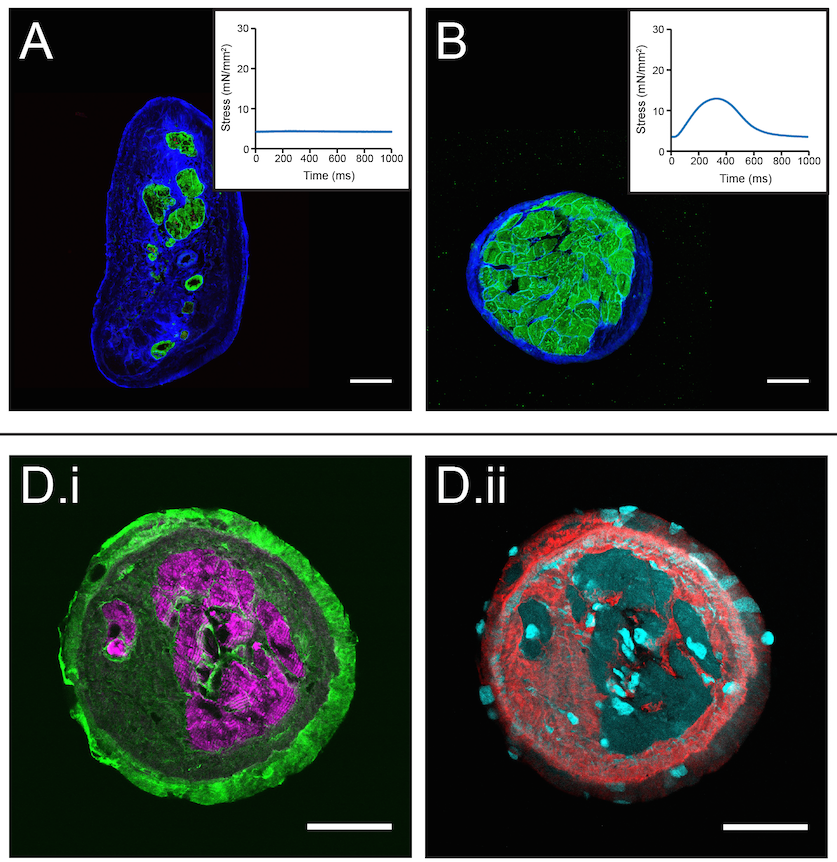
We recently published a paper that shows relationships between structure and function of cardiac muscle strips, known in the field as trabeculae, that to our knowledge were previously not fully appreciated.
The paper is open access in Scientific Reports.
Michelle Munro, lead-author who conducted the study, found that there was a wide variation in force generated by trabeculae that were excised from failing human hearts. The variable contractile performance was closely correlated with the myocyte content that she measured by structural imaging using immuno-histochemistry and confocal microscopy.
The regions in the muscle strips that did not contain muscle cells appeared to be largely occupied by extracellular matrix components. While interesting in itself, our observations suggest that researchers studying heart function by measuring trabecular force should investigate trabecula structure before interpreting their data - something that most labs currently do not do routinely.
This was the last paper hanging over from Michelle's very nice thesis work - she currently does a postdoc with Pete Jones in Otago, NZ. That makes it three first author papers from her PhD.
Interestingly, we found it quite difficult to publish these results. At least partly, we think this is because our approach is slightly different from what is normally done in the cardiac contractile mechanics field.
Finally, this is another output from the ongoing collaboration with fellow Auckland colleagues David Crossman and Marie Ward, as well as clinical colleague Peter Ruygrok.